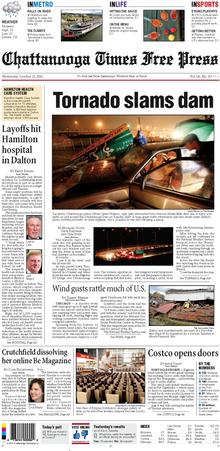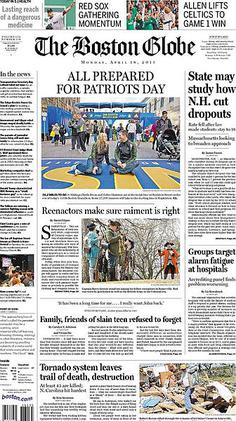
The Boston Globe is an American daily newspaper founded and based in Boston, Massachusetts. The newspaper has won a total of 27 Pulitzer Prizes.

Chattanooga is a city in and the county seat of Hamilton County, Tennessee, United States. It is located along the Tennessee River, and borders Georgia to the south. With a population of 181,099 in 2020, it is Tennessee's fourth-largest city and one of the two principal cities of East Tennessee, along with Knoxville. It anchors the Chattanooga metropolitan area, Tennessee's fourth-largest metropolitan statistical area, as well as a larger three-state area that includes Southeast Tennessee, Northwest Georgia, and Northeast Alabama.
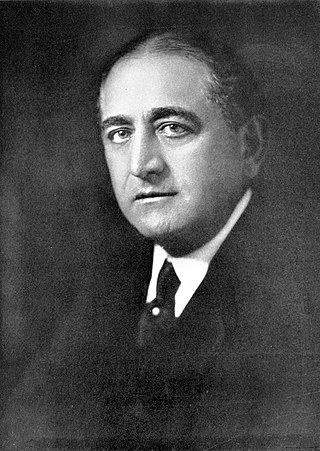
Adolph Simon Ochs was an American newspaper publisher and former owner of The New York Times and The Chattanooga Times, which is now the Chattanooga Times Free Press. Through his only child, Iphigene Ochs Sulzberger, and her husband Arthur Hays Sulzberger, Ochs's descendants continue to publish The New York Times through the present day.
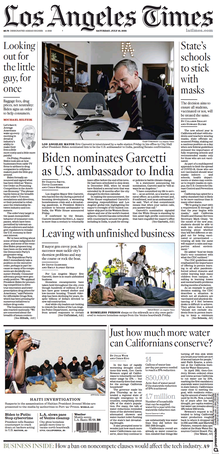
The Los Angeles Times is a regional American daily newspaper that started publishing in Los Angeles, California in 1881. Based in the Greater Los Angeles area city of El Segundo since 2018, it is the sixth-largest newspaper by circulation in the United States, as well as the largest newspaper in the western United States. Owned by Patrick Soon-Shiong and published by California Times, the paper has won more than 40 Pulitzer Prizes.

The Tennessean is a daily newspaper in Nashville, Tennessee. Its circulation area covers 39 counties in Middle Tennessee and eight counties in southern Kentucky. It is owned by Gannett, which also owns several smaller community newspapers in Middle Tennessee, including The Dickson Herald, the Gallatin News-Examiner, the Hendersonville Star-News, the Fairview Observer, and the Ashland City Times. Its circulation area overlaps those of the Clarksville Leaf-Chronicle and The Daily News Journal in Murfreesboro, two other independent Gannett papers. The company publishes several specialty publications, including Nashville Lifestyles magazine.
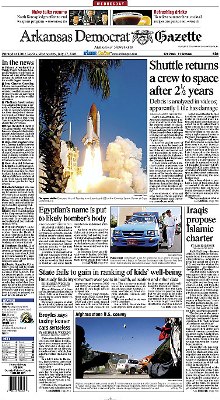
The Arkansas Democrat-Gazette is the newspaper of record in the U.S. state of Arkansas, printed in Little Rock with a northwest edition published in Lowell. It is distributed for sale in all 75 of Arkansas' counties.

The Oregonian is a daily newspaper based in Portland, Oregon, United States, owned by Advance Publications. It is the oldest continuously published newspaper on the U.S. West Coast, founded as a weekly by Thomas J. Dryer on December 4, 1850, and published daily since 1861. It is the largest newspaper in Oregon and the second largest in the Pacific Northwest by circulation. It is one of the few newspapers with a statewide focus in the United States. The Sunday edition is published under the title The Sunday Oregonian. The regular edition was published under the title The Morning Oregonian from 1861 until 1937.

The New York Daily News, officially titled the Daily News, is an American newspaper based in Jersey City, New Jersey. It was founded in 1919 by Joseph Medill Patterson in New York City as the Illustrated Daily News.

The Courier Journal, also known as the Louisville Courier Journal, and called The Courier-Journal between November 8, 1868, and October 29, 2017, is a daily newspaper published in Louisville, Kentucky and owned by Gannett, which bills it as "Part of the USA Today Network".

The Denver Post is a daily newspaper and website published in the Denver metropolitan area. As of June 2022, it has an average print circulation of 57,265. In 2016, its website received roughly six million monthly unique visitors generating more than 13 million page views, according to comScore.

Philadelphia Daily News is a tabloid newspaper that serves Philadelphia, Pennsylvania. The newspaper is owned by The Philadelphia Inquirer, LLC, which also owns The Philadelphia Inquirer, a daily newspaper in Philadelphia
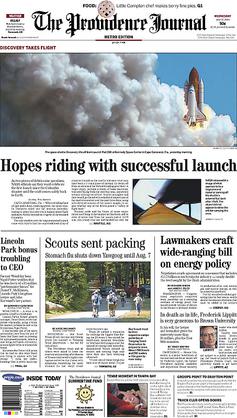
The Providence Journal, colloquially known as the ProJo, is a daily newspaper serving the metropolitan area of Providence, the largest newspaper in Rhode Island, US. The newspaper was first published in 1829. The newspaper had won four Pulitzer Prizes as of 2023.

The Pittsburgh Post-Gazette, also known simply as the PG, is the largest newspaper serving metropolitan Pittsburgh in the U.S. state of Pennsylvania. Descended from the Pittsburgh Gazette, established in 1786 as the first newspaper published west of the Allegheny Mountains, the paper formed under its present title in 1927 from the consolidation of the Pittsburgh Gazette Times and The Pittsburgh Post.
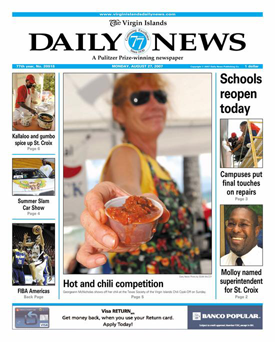
The Virgin Islands Daily News is a daily newspaper in the United States Virgin Islands headquartered on the island of Saint Thomas. In 1995 the newspaper became one of the smallest ever to win journalism's most prestigious award, the Pulitzer Prize for Public Service. The newspaper is published every day except Sunday. The paper maintains its main office on Saint Thomas and a smaller bureau on Saint Croix.

The Public Ledger was a daily newspaper in Philadelphia, Pennsylvania, published from March 25, 1836, to January 1942. Its motto was "Virtue, Liberty, and Independence". It was Philadelphia's most widely-circulated newspaper for a period, but its circulation began declining in the mid-1930s. The newspaper also operated a syndicate, the Ledger Syndicate, from 1915 until 1946.
Drue Smith was an American journalist and broadcaster born in Chattanooga, Tennessee around the close of World War I. Her precise birth date has never been made public and has not been revealed since her death at her request. She has stated that "I'm terrible with years. I don't keep 'em." She married her husband, Roy Blaney Smith, on September 6, 1934, and later on in their life gave birth to their daughter Drucilla Smith Fuller. Drue Smith died on December 27, 2001, as a result of heart failure. It is safe to assume that she died around the ages between 81 or 84 as the end of World War I was 1918.
The Chattanoogan and its website Chattanoogan.com is an online media outlet that concentrates on news from Chattanooga, Tennessee. It is published by John Wilson, previously a staff writer for the Chattanooga Free Press. The website was launched on September 1, 1999, and calls itself "one of the first full-service web-only daily newspapers in the country".

Abby Crawford Milton was an American suffragist and supercentenarian. She was the last president of the Tennessee Equal Suffrage Association. She traveled throughout Tennessee making speeches and organizing suffrage leagues in small communities. In 1920, she, along with Anne Dallas Dudley and Catherine Talty Kenny, led the campaign in Tennessee to approve ratification of the Nineteenth Amendment to the US Constitution. On August 18, Tennessee became the 36th and deciding state to ratify the amendment, thereby giving women the right to vote throughout the country.
Ruth Sulzberger Holmberg was a newspaper publisher and member of the Ochs-Sulzberger family.
In August 1896, Chattanooga Times publisher Adolph Ochs acquired The New-York Times, implementing significant alterations to the newspaper's structure. Ochs established the Times as a merchant's newspaper and removed the hyphen from the newspaper's name. In 1905, The New York Times opened Times Tower, marking expansion. The Times experienced a political realignment in the 1910s amid several disagreements within the Republican Party. The New York Times reported on the sinking of the Titanic as other newspapers were cautious about bulletins from the Associated Press. Through managing editor Carr Van Anda, the Times focused on scientific advancements, reporting on Albert Einstein's then-unknown theory of general relativity and becoming involved in the discovery of the tomb of Tutankhamun. In April 1935, Ochs died, leaving his son-in-law Arthur Hays Sulzberger as publisher. The Great Depression forced Sulzberger to reduce The New York Times's operations, and developments in the New York newspaper landscape resulted in the formation of larger newspapers, such as the New York Herald Tribune and the New York World-Telegram. In contrast to Ochs, Sulzberger encouraged wirephotography.
